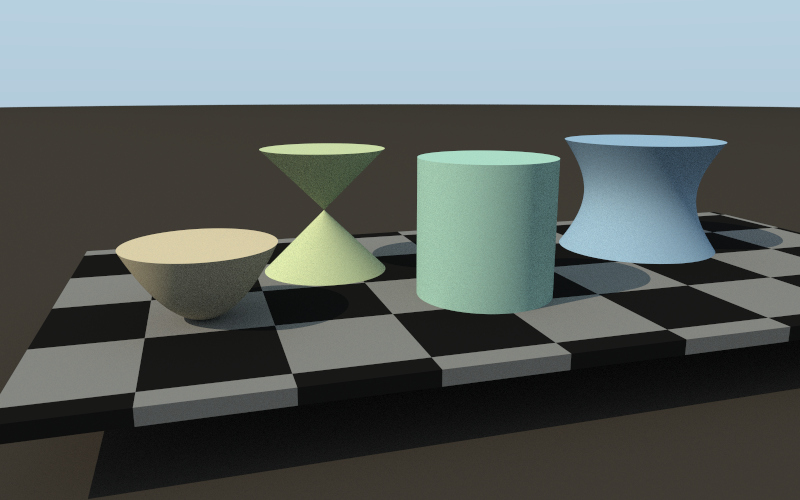The Raysail is a Monte Carlo type raytracer based on the learn Ray Tracing in One Weekend series using Rust. It was forked from the Remda project, which implements the features from first two books of the series. I've tried to add the features of the third, but I have doubts that my code is actually correct, even that the resulting images look alright.
Furthermore the Raysnail incorporates code from the QBVH-Rust-Ray-Tracer, namely the triangle mesh module, OBJ file loading and the Blinn-Phong material code.
Beyond the ongoing work to incorporate all the improvements layed out in the third book of the series, fittingly named "The rest of your life", there are some features which I want to add to the Raysnail next.
There is a very crude implementation of a preview window right now in the example "preview_sdl2", but it needs to become more separated from the scene examples and command line paramaters to trace some scene with given height and width using the preview.
I want to implement at least partial support for the PovRay scene definition language (SDL). Sadly, PovRay's material definitions are very different from the materials in the Raysnail, and it might be hard or even impossible to emulate PovRay materials properly, past trivial examples. At the time of writing this, I've implemented a very rudimentary SDL parser which can read PovRay camera and sphere definitions (see sdl/example.sdl). I want to expand this for more geometry and material definitons, but likely it will only support a subset of the PovRay SDL features.
As a fan of 3D fractals I'd like to implement some fractal rendering code. At the moment there is a crude implmentation of the mandelbulb, which renders only very low quality, but it can serve as a proof of concept that iut is possible to use the raysnail code to render 3D fractals. Maybe it requires a different frontend though.
Please check the Wiki for a full list of features and plans: https://github.com/Varkalandar/raysnail/wiki
If you have installed Rust and Cargo, an easy way to run the raysnail is this command:
cargo run -r --bin raysnail -- -w 800 -h 500 --samples 65 --scene sdl/example.sdl- --scene tells which SDL file to read and render
- --samples is the number of samples taken per pixel. Taking more samples improves the image quality, but also raises the rendering time.
- -w is the image width
- -h is the image height
- --outfile (-o) PNG image file to write. The default is "output.png" (Supported from raysnail 0.1.5)
- --passes (-p) Oversampling passes to improve the quality of image areas with high noise and/or high contrast. The default is 1, the quality improvements of each additional pass are diminishing, so usually this will be in the range 1 .. 10 (Supported from raysnail 0.1.5)
GPLv3
Except:
example/earth-map.png, download from NASA, falls in public domain.
